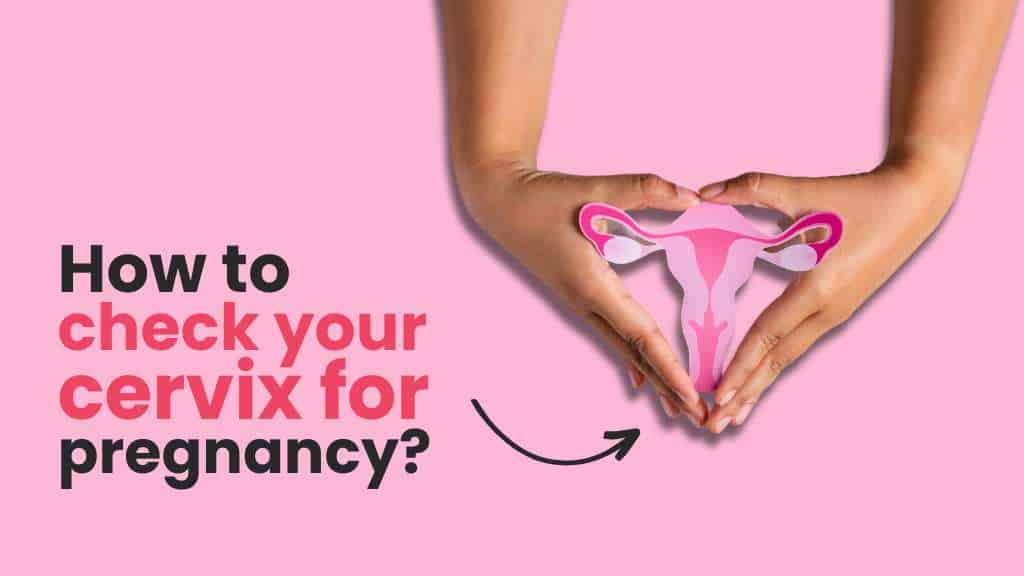
Figuring out how to check your cervix isn’t as tough as it sounds, and it can actually come in handy if you want to keep tabs on any changes that could signal ovulation, early pregnancy, or the onset of labor. You might think it’s a skill exclusive to medical pros, but anyone can learn about their own cervix and how to spot shifts in its position. If you’re curious, delve into the details of how to check your cervix for pregnancy, during your menstrual cycle, or when you’re trying to conceive.
Where is your cervix?
The cervix is a part of the female reproductive system located at the lower end of the uterus, at the top of the vagina. The cervix forms a canal that connects the uterus to the vagina, and it plays a crucial role in childbirth, menstrual flow, and fertility.
How to check your cervix for dilation during pregnancy?
How does your cervix feel in general? Well, the inside of your vagina is mostly soft and spongy, but the cervix is a firmer spot that’s deeper in the back and higher up. As you get closer to ovulation, it tends to become softer and wider, but it’s not going to feel like the walls of your vagina. Instead, it’s more like a button that you can feel.
Cervix during ovulation
If you’re hoping to conceive, keeping tabs on your cervical position can give you valuable insights into your fertile window—the best time to have sex for maximizing your chances of getting pregnant. Here’s a simplified description of how the cervix changes during ovulation:
- It becomes higher, softer, and more open. This change allows the sperm to travel more easily through the cervix and into the uterus.
- The cervical mucus becomes thinner, clearer, and more slippery, resembling the consistency of raw egg whites. This fertile cervical mucus helps sperm swim through the cervix and reach the egg for fertilization.
Cervix during early pregnancy
How to check your cervix for pregnancy during its initial months? The cervix is like the gateway to your womb, positioned between your vagina and uterus. If you were to feel inside your vagina, you’d notice it feels like a round donut or a ball, kinda up high. Now, keeping track of changes in your cervix can actually help you detect early signs of pregnancy.
The first change you might notice is the position of your cervix. During ovulation, it tends to rise higher up in the vagina, while around the time of menstruation, it tends to be lower. But if you’ve successfully conceived, the cervix will stay in that elevated position.
The second noticeable change is how it feels. Before your period, if you haven’t gotten pregnant, your cervix will feel firm, sort of like an unripened fruit. However, if you are indeed pregnant, your cervix will feel softer.
So, paying attention to these changes in your cervix can give you some clues about whether you might be expecting or not. It’s important to note that individual experiences may vary, but it can still be helpful to keep an eye on these signs. For more sure confirmation of your pregnancy, you must take a pregnancy test or visit your doctor.
Cervix during dilation
During late pregnancy and childbirth, the cervix goes through its most significant transformations, and you’ve probably seen it depicted in movies. You know those scenes where the TV doctors exclaim, “They’re 10 centimeters!” Well, that’s referring to the dilation of the cervix. It goes from being tightly closed and firm at the beginning of pregnancy to stretching to a width of 10 centimeters and becoming fully thinned out (also known as effaced) by the time of birth.
Interestingly, you might be able to observe these changes yourself. It’s worth noting that some people start dilating weeks before they actually go into labor, while others may not begin until a few days or hours before delivery. So, if you notice a few centimeters of dilation, it doesn’t necessarily mean that labor is about to happen.
Here’s a step-by-step guide on how to check your cervix for pregnancy with pictures:
1. Wash your hands thoroughly
It’s really important to avoid introducing any infections to your reproductive system. So, if you’re dealing with a yeast infection or any other type of vaginal infection, it’s best to wait until the infection clears up before checking your cervix. Give your body some time to heal before examining things down there.
2. Take precautions
If you’re in labor and curious about checking your cervix, it’s important to remember that doing it frequently can bring in bacteria, which is definitely not something you’d want, especially if your water has already broken. While it’s possible to check your cervix on your own, try not to do it too often, and always make sure your hands are super clean.
3. Find a comfortable position
To make it easier for you to reach your cervix, try different body positions. You could sit on the toilet, put one leg up on the edge of the bathtub, or even try squatting. Find a position that feels comfortable and allows you to reach your cervix without any difficulty.
4. Reach your finger inside your vagina
Okay, imagine your vagina like a hallway. Now, using your index or middle finger, gently slide it in as far as you can, kind of like moving upward. And at the end of that hallway, think of your cervix as the door.
5. Locate the cervix
Do you know how your vagina feels a bit spongy and can give way when you press on it? Well, the cervix is different. It’s like a firm, round dimple. When you’re not close to ovulation, you can easily locate your cervix. But when you’re ovulating, things change. Your cervix may move higher up in your body, become softer, and be a bit more challenging to reach.
6. Record your cervical position
Make sure you jot down these details on your fertility chart. Keeping track of how you feel won’t just give you a better understanding of your body’s changes, but it’ll also make it easier for you to pinpoint your most fertile days.
Things to remember
1. It is advised not to examine the position of your cervix during or after sexual activity. The location of the cervix can vary depending on your level of sexual arousal, regardless of the phase of your menstrual cycle.
2. When you’re new to this, try to check the position of your cervix every few days, even if you think you’re not ovulating. It’s easier to locate when you’re not ovulating, and it will help you understand what you’re experiencing better.
3. Make sure to check the position of your cervix around the same time every day. You can do this when you get ready in the morning or during or after your shower.
An endnote on how to check your cervix for pregnancy
Changes in the cervix commonly happen in the early stages of pregnancy, but it can be tough to notice them. Therefore, they aren’t a dependable way to figure out if you’re pregnant. Moreover, the position of your cervix might vary depending on how you’re positioned or if you’ve had sex recently. If you manage to notice specific changes, they might assist in detecting pregnancy. Nevertheless, it’s important to confirm your pregnancy with a pregnancy test after you’ve missed your first period.






